
Starting your own edible garden is a great idea. Many people are doing it – 30% of urban households have their own edible gardens. This helps our planet and gives us fresh food to eat.
Having a garden at home is fun and easy. You just need to choose a good spot, check the weather, and make sure the soil is healthy.
Let’s learn some cool tips to help you grow yummy fruits and veggies at home.
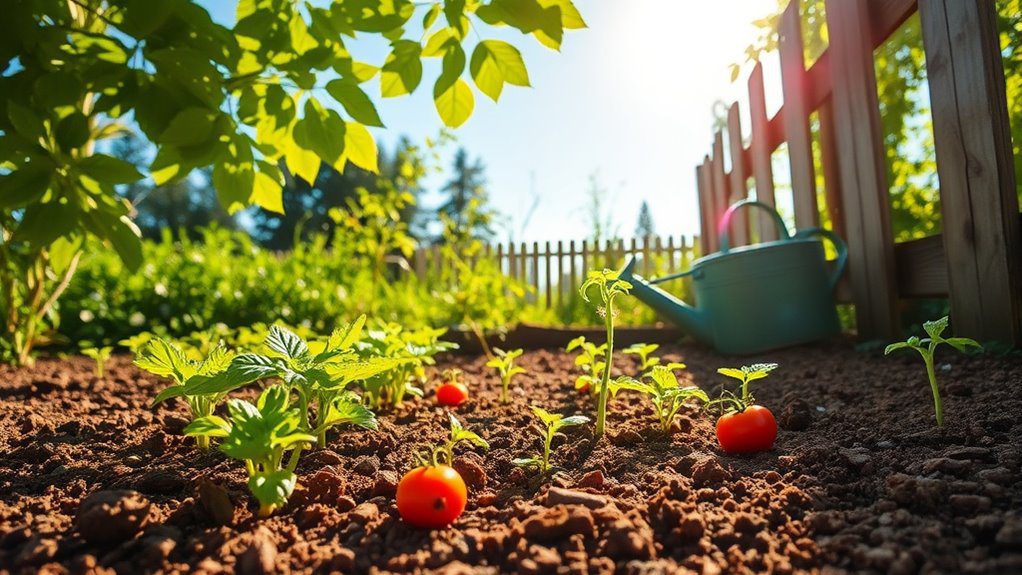
Choosing the right location for your edible garden is vital to its success. Look for a spot that receives at least six to eight hours of sunlight each day, as most vegetables thrive in bright light. Additionally, consider proximity to a water source for easy irrigation, and guarantee the area has good drainage to prevent waterlogging. Avoid shaded areas from trees or buildings, and choose a location that is accessible for maintenance and harvesting.
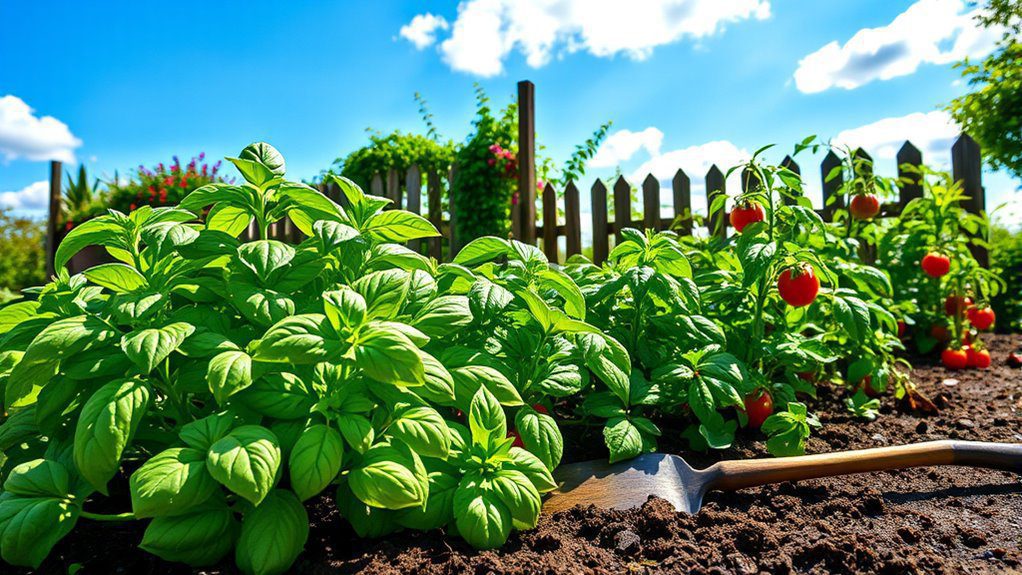
Understanding your climate is essential for starting your own edible garden. Knowing the local temperatures, seasonal changes, and precipitation patterns helps you select the right plants that will thrive in your specific environment. Researching hardiness zones and average frost dates can guide your planting schedule, ensuring that you sow seeds and transplant seedlings at ideal times. By aligning your garden choices with your climate, you can maximize growth and yield, turning your garden into a fruitful harvest.
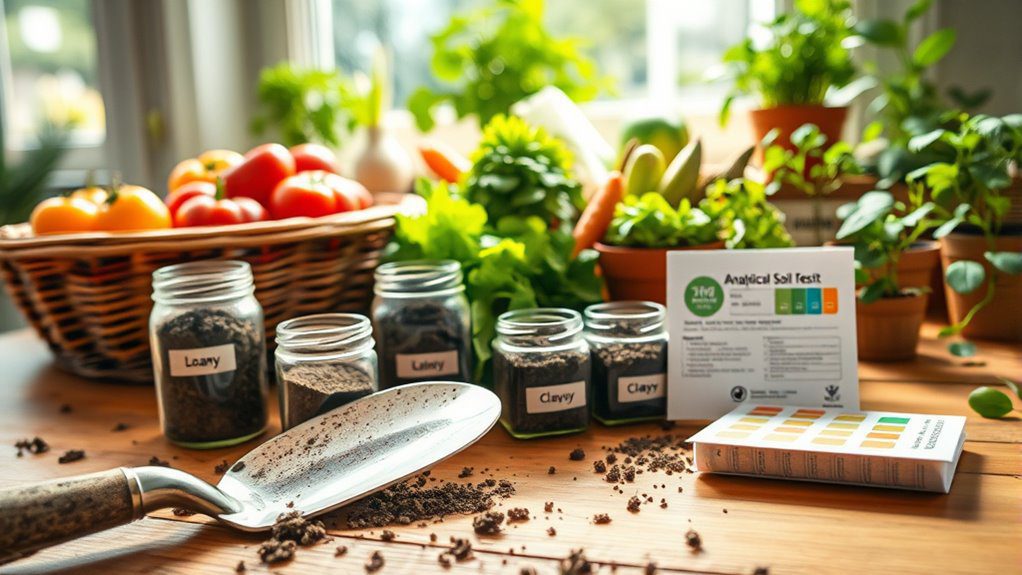
Testing your soil is an essential first step in starting your own edible garden. It helps determine nutrient levels, pH balance, and soil type, ensuring you understand the conditions you’re working with. You can purchase a soil test kit or send samples to a local extension service for analysis. Results will indicate any amendments needed, such as fertilizers or organic matter, allowing you to create a healthy environment for your plants to thrive.
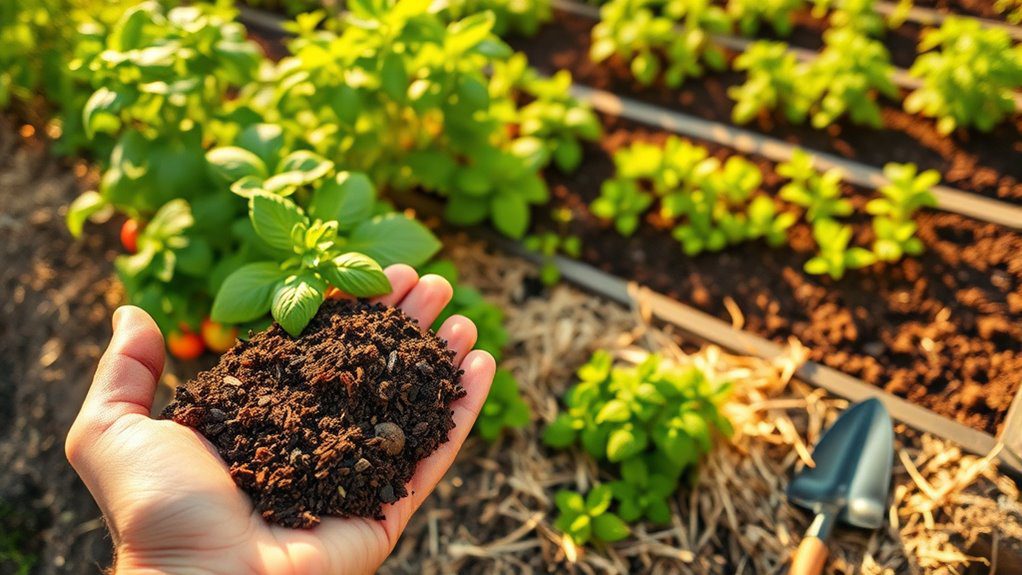
Improving soil health is vital for a thriving edible garden. Start by enriching your soil with organic matter, such as compost, which enhances nutrient availability and promotes beneficial microbial activity. Regularly rotating crops can prevent soil depletion and reduce pest issues. Additionally, mulch can help retain moisture and suppress weeds. Test your soil’s pH and nutrient levels, and amend as needed to create a balanced environment that supports healthy plant growth.
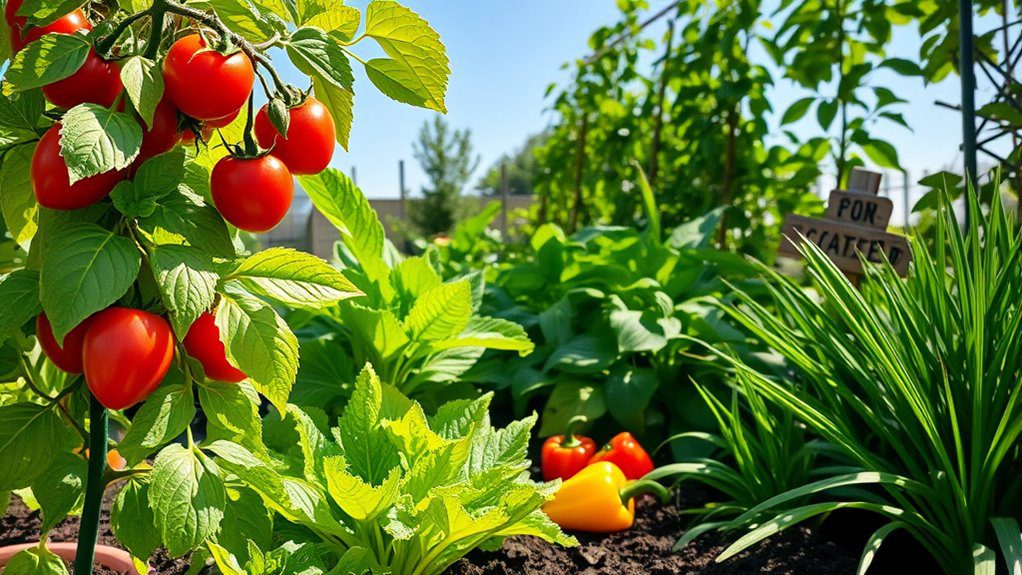
When selecting the best plants for your edible garden, consider factors like climate, soil type, and available sunlight. Start with easy-to-grow options such as tomatoes, herbs, lettuce, and peppers, which thrive in various conditions. Choose a mix of perennials and annuals to guarantee continuous harvests throughout the growing season. Additionally, think about companion planting to maximize space and enhance growth by pairing compatible plants together. Happy gardening!
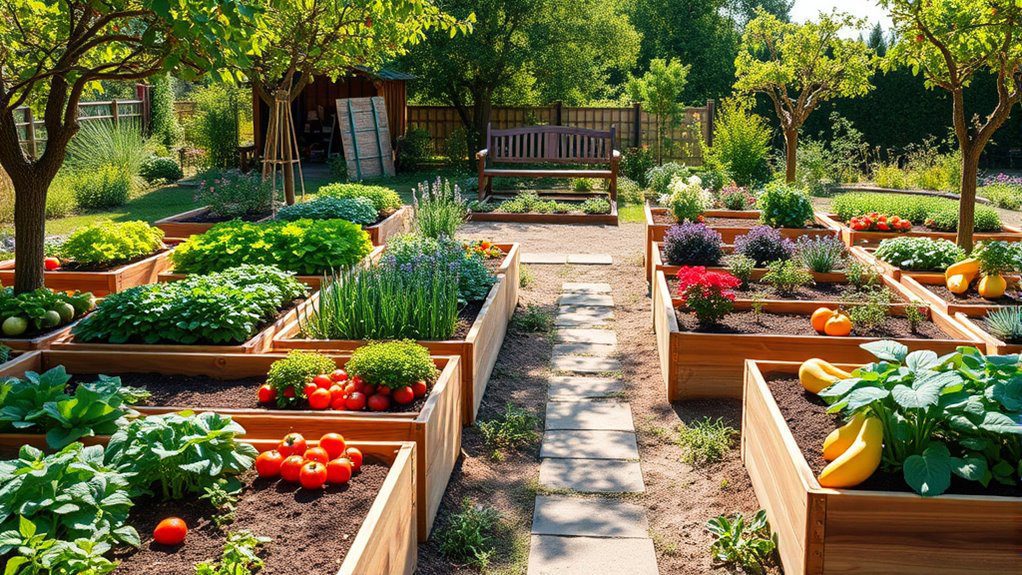
Planning your garden layout is an essential step in establishing a successful edible garden. Begin by evaluating your available space, sunlight exposure, and soil type. Consider the size and growth habits of the plants you want to grow, and group those with similar water and sunlight needs together. Create a design that maximizes efficiency, with easy access for maintenance, while also ensuring adequate spacing for airflow. Utilizing raised beds or container gardens can also help optimize your layout.
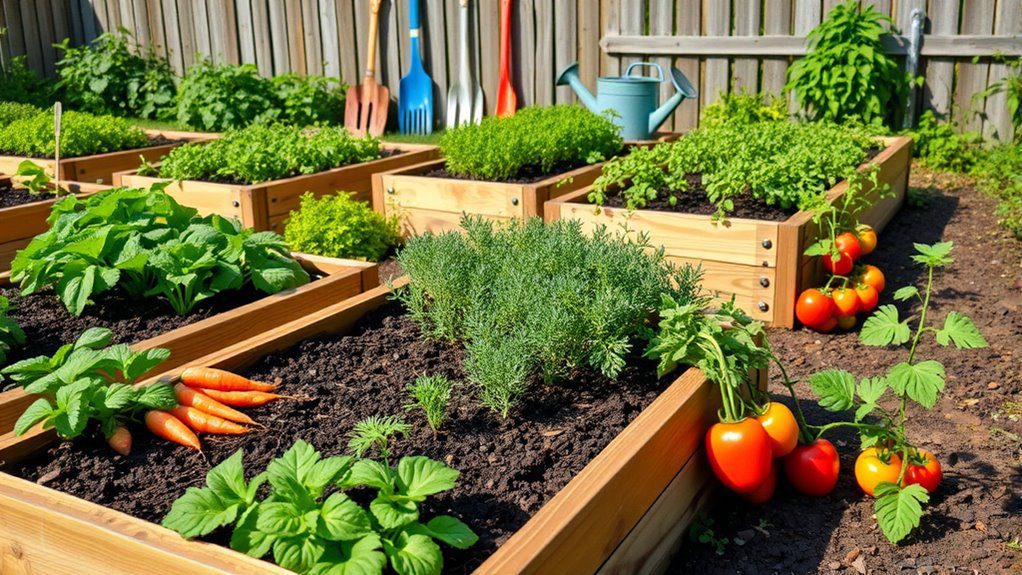
Using raised beds for your edible garden can greatly enhance efficiency and productivity. They provide perfect soil conditions, improve drainage, and reduce soil compaction, allowing plants to thrive. Raised beds also create a defined growing space, making it easier to manage weeds and pests. Additionally, they can be positioned for prime sun exposure and can help extend the growing season by warming the soil quicker in spring and retaining heat in cooler months. Overall, raised beds simplify gardening and boost yields.
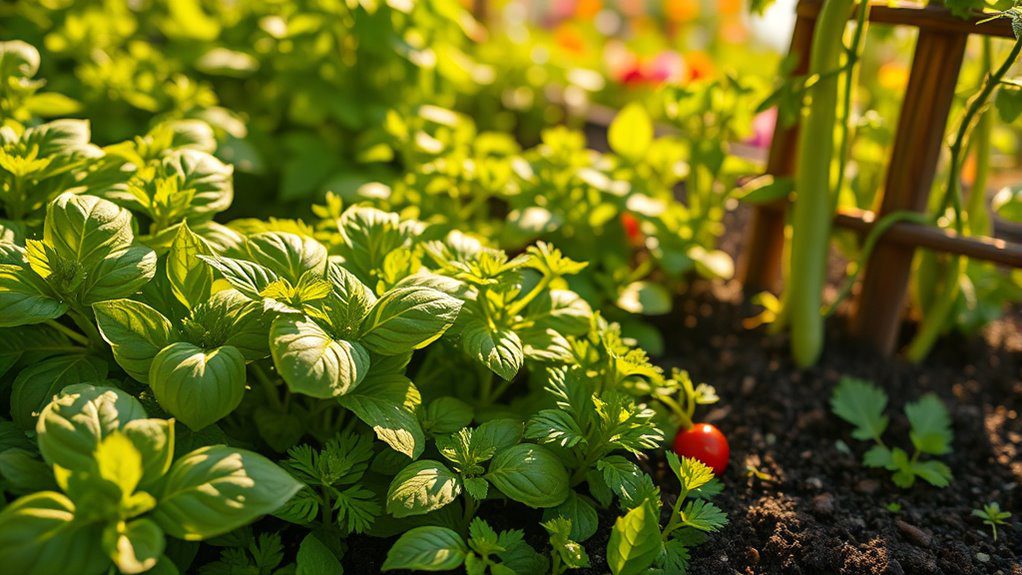
Starting with easy-to-grow plants is an ideal way to begin your edible gardening journey. Consider selecting herbs like basil, parsley, or mint, which require minimal maintenance and thrive in various conditions. Additionally, vegetables such as radishes, lettuce, and green beans are quick to sprout and can yield a bountiful harvest in a short time. Choosing these beginner-friendly plants will help build your confidence and spark enthusiasm for your garden.
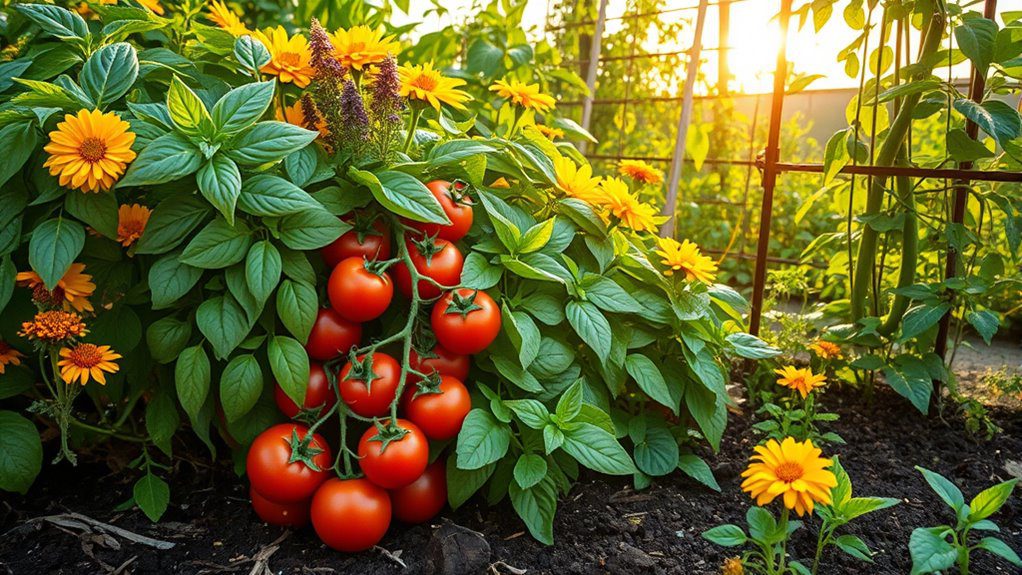
Incorporating companion planting into your edible garden can greatly enhance growth, deter pests, and improve flavor. This technique involves planting different crops in proximity to benefit each other. For instance, tomatoes thrive when grown alongside basil, which can improve their flavor and repel harmful insects. Similarly, planting marigolds can deter nematodes and other pests. By strategically pairing plants, you can create a thriving ecosystem that maximizes yield and promotes healthier plants.
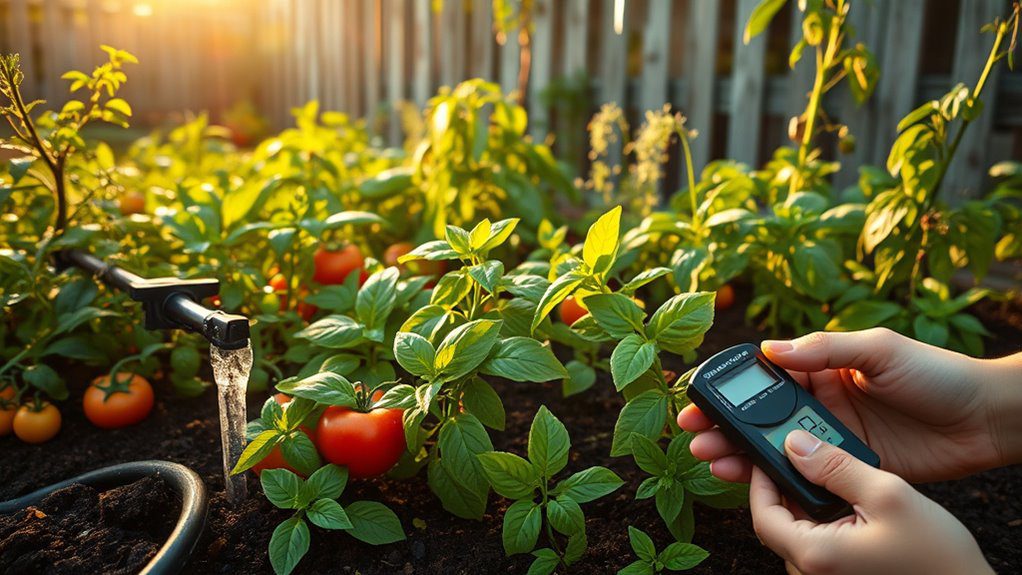
Optimizing watering practices is essential for a thriving edible garden. Implement techniques such as drip irrigation or soaker hoses to deliver consistent moisture directly to the roots, reducing water waste. Water early in the morning or late in the afternoon to minimize evaporation. Check soil moisture regularly to determine when to water, allowing plants to grow deep roots and be more resilient. This approach will not only conserve water but also enhance the health and productivity of your garden.
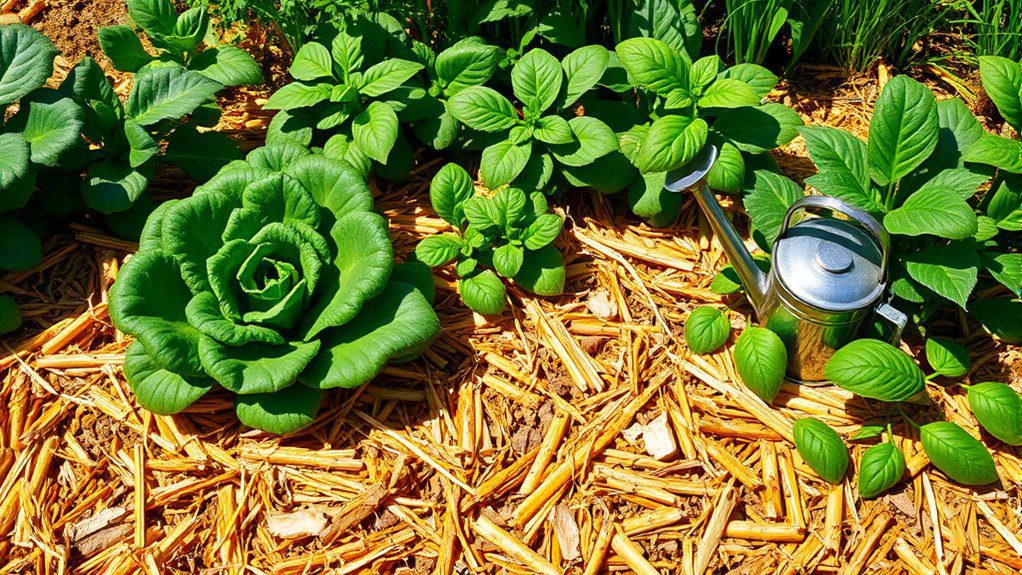
Mulch is an essential component for retaining moisture in your edible garden. By laying down organic materials such as straw, wood chips, or grass clippings, you create a protective barrier over the soil. This helps to reduce evaporation, keeping the ground consistently damp and encouraging healthy root growth. Additionally, mulch minimizes weed competition, allowing your plants to thrive. Regularly topping up your mulch layer can enhance moisture retention and improve overall soil health, ensuring a bountiful harvest.
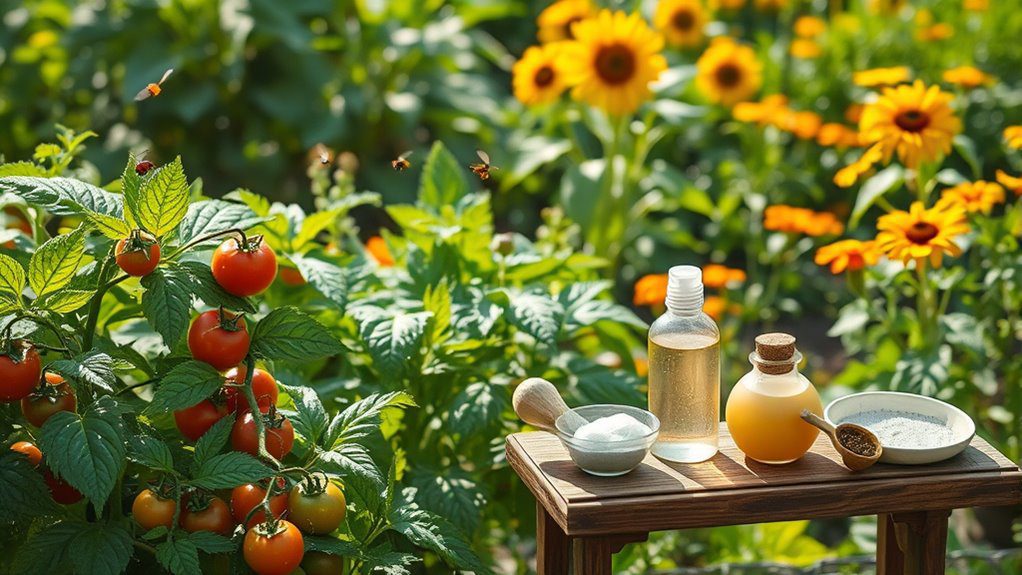
Managing pests naturally in your edible garden is essential for maintaining a healthy ecosystem while avoiding harmful chemicals. Techniques include introducing beneficial insects like ladybugs and lacewings, which prey on pests, and using companion planting to deter unwanted insects. Additionally, homemade remedies such as neem oil, insecticidal soap, or diatomaceous earth can effectively manage infestations. Regularly inspecting your plants and maintaining healthy soil will also strengthen them against pests, promoting a thriving garden.
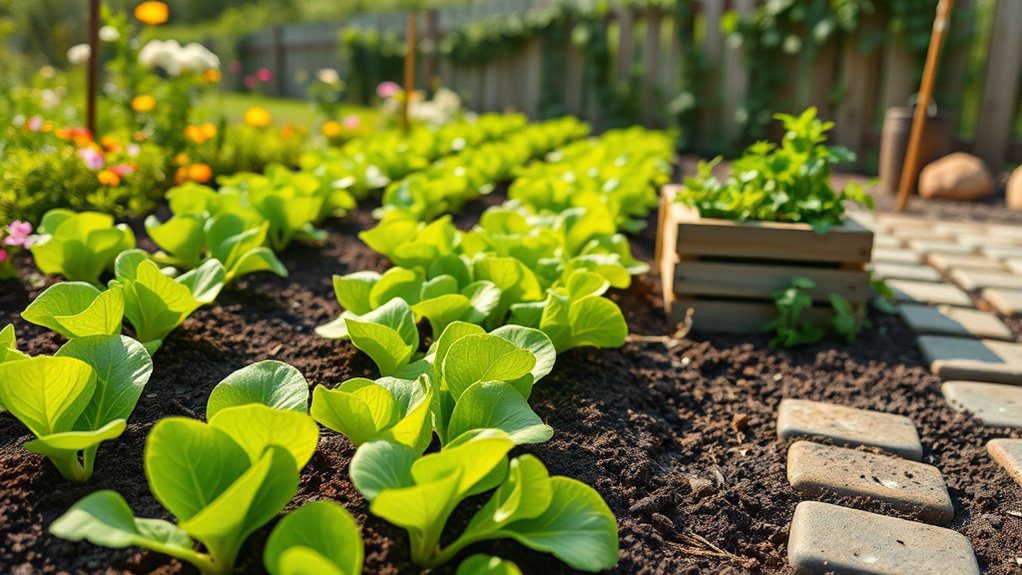
Understanding seasonal planting is essential for a successful edible garden. Different plants thrive during specific seasons, influencing their growth, yield, and flavor. Spring is ideal for planting cool-season crops like lettuce and peas, while summer is perfect for warm-season veggies such as tomatoes and peppers. By aligning your planting schedule with seasonal changes, you can maximize production and enjoy fresh produce year-round. Consider local climate variations and frost dates to optimize your gardening efforts.
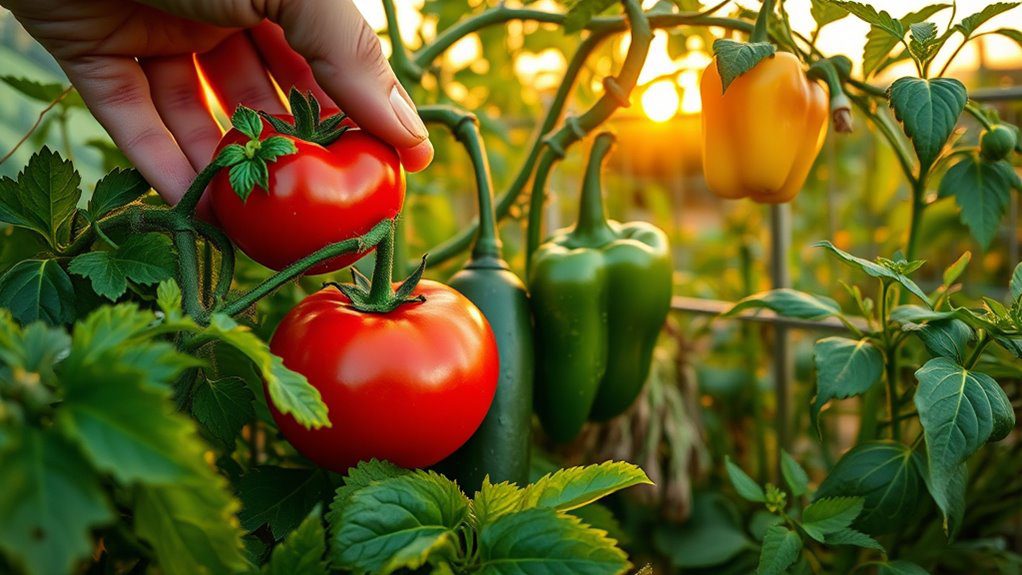
Harvesting at the right time is essential for maximizing flavor and nutritional value in your edible garden. Each plant species has specific signs that indicate when it’s ready to be picked, such as size, color, and firmness. Regularly checking your crops can prevent overripening and improve yield. Timing can also differ based on environmental conditions, so be attentive to changes in weather and plant growth. A well-timed harvest guarantees the freshest and tastiest produce for your kitchen.
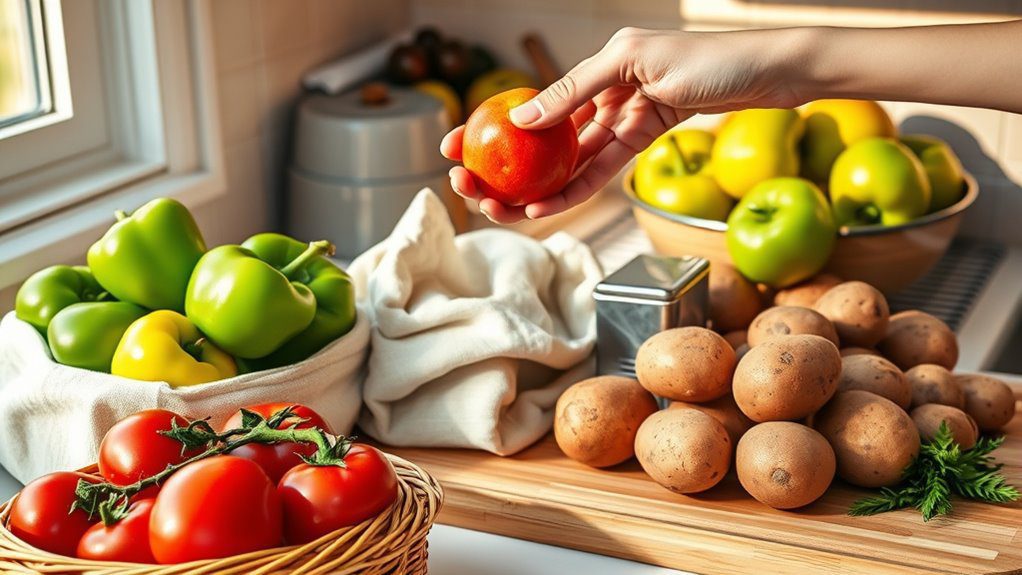
Properly storing your produce can greatly extend its shelf life and maintain its freshness. Keep fruits and vegetables in breathable bags or containers to prevent moisture build-up, which can lead to rot. Some produce, like apples, should be kept in a refrigerator, while others, such as tomatoes and potatoes, thrive in a cool, dark space. Always wash your produce just before use instead of before storage to prevent spoilage. Maintaining ideal conditions helps preserve flavor and nutrients in your garden bounty.
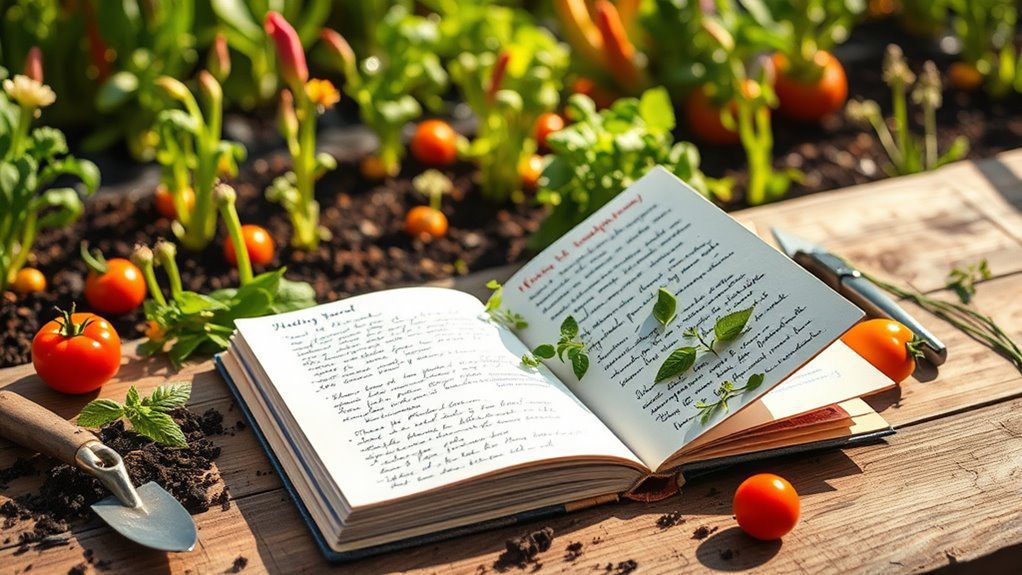
Keeping a gardening journal is an invaluable practice for any edible garden enthusiast. It allows you to track the growth and progress of your plants, noting what works well and what doesn’t. Record planting dates, weather conditions, pest sightings, and harvest yields to identify patterns over time. Additionally, this journal serves as a creative outlet where you can sketch garden layouts, jot down recipes, and reflect on your gardening experiences, ultimately improving your skills year after year.
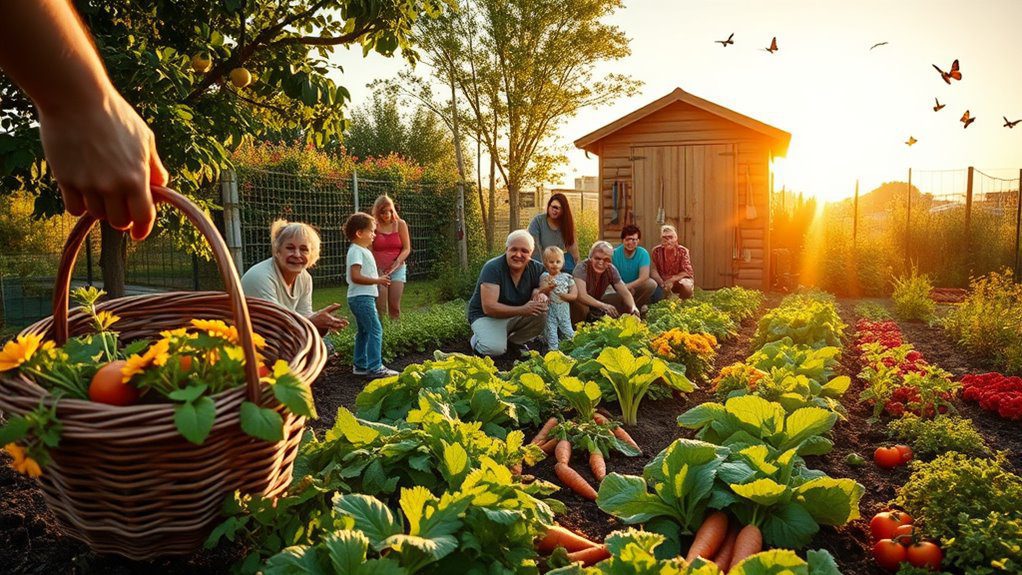
Joining a local gardening community can be an enriching experience for anyone interested in starting an edible garden. These communities often provide a wealth of knowledge, resources, and support from fellow gardeners. You can exchange tips, share seeds, and learn about local growing conditions. Additionally, community gardens offer hands-on experience, allowing you to collaborate on projects and cultivate a sense of camaraderie while growing delicious, fresh produce together.
By following these tips, you’ll cultivate your edible garden into a vibrant oasis of flavors and colors. Just imagine stepping outside, snipping fresh basil, or plucking ripe tomatoes, each bite bursting with the sunshine of your hard work. Remember, gardening is an evolving journey—embrace each lesson and celebrate your successes. With patience and passion, you’ll not only grow food but also nurture a deep connection to the land and nature’s rhythm. Your garden awaits, ready to flourish!

Don't let aphids, slugs, and caterpillars ruin another plant. Take back control with simple, natural methods that actually work.